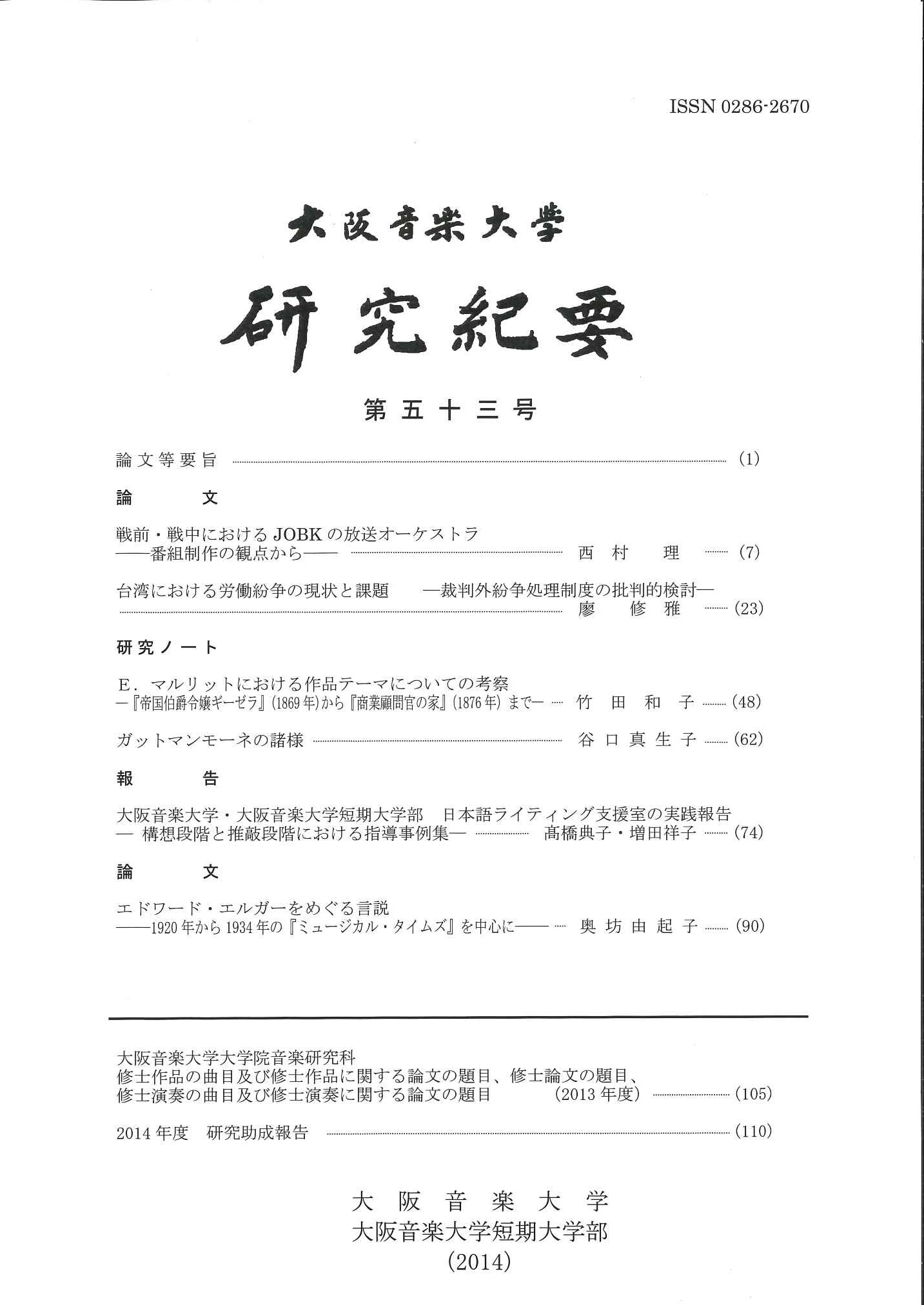Volume 52
Displaying 1-13 of 13 articles from this issue
- |<
- <
- 1
- >
- >|
-
Article type: Cover
2014Volume 52 Pages Cover1-
Published: March 01, 2014
Released on J-STAGE: April 01, 2021
Download PDF (97K) -
Article type: Index
2014Volume 52 Pages Toc1-
Published: March 01, 2014
Released on J-STAGE: April 01, 2021
Download PDF (109K) -
Article type: Bibliography
2014Volume 52 Pages 1-5
Published: March 01, 2014
Released on J-STAGE: April 01, 2021
Download PDF (136K) -
Article type: Article
2014Volume 52 Pages 6-30
Published: March 01, 2014
Released on J-STAGE: April 01, 2021
Download PDF (852K) -
Article type: Article
2014Volume 52 Pages 31-42
Published: March 01, 2014
Released on J-STAGE: April 01, 2021
Download PDF (457K) -
Article type: Article
2014Volume 52 Pages 43-54
Published: March 01, 2014
Released on J-STAGE: April 01, 2021
Download PDF (945K) -
Article type: Article
2014Volume 52 Pages 55-73
Published: March 01, 2014
Released on J-STAGE: April 01, 2021
Download PDF (582K) -
Article type: Article
2014Volume 52 Pages 74-91
Published: March 01, 2014
Released on J-STAGE: April 01, 2021
Download PDF (964K) -
Article type: Appendix
2014Volume 52 Pages 92-94
Published: March 01, 2014
Released on J-STAGE: April 01, 2021
Download PDF (13K) -
Article type: Appendix
2014Volume 52 Pages 95-
Published: March 01, 2014
Released on J-STAGE: April 01, 2021
Download PDF (53K) -
Article type: Appendix
2014Volume 52 Pages App1-
Published: March 01, 2014
Released on J-STAGE: April 01, 2021
Download PDF (35K) -
Article type: Cover
2014Volume 52 Pages Cover2-
Published: March 01, 2014
Released on J-STAGE: April 01, 2021
Download PDF (13K) -
Article type: Index
2014Volume 52 Pages Toc2-
Published: March 01, 2014
Released on J-STAGE: April 01, 2021
Download PDF (136K)
- |<
- <
- 1
- >
- >|
